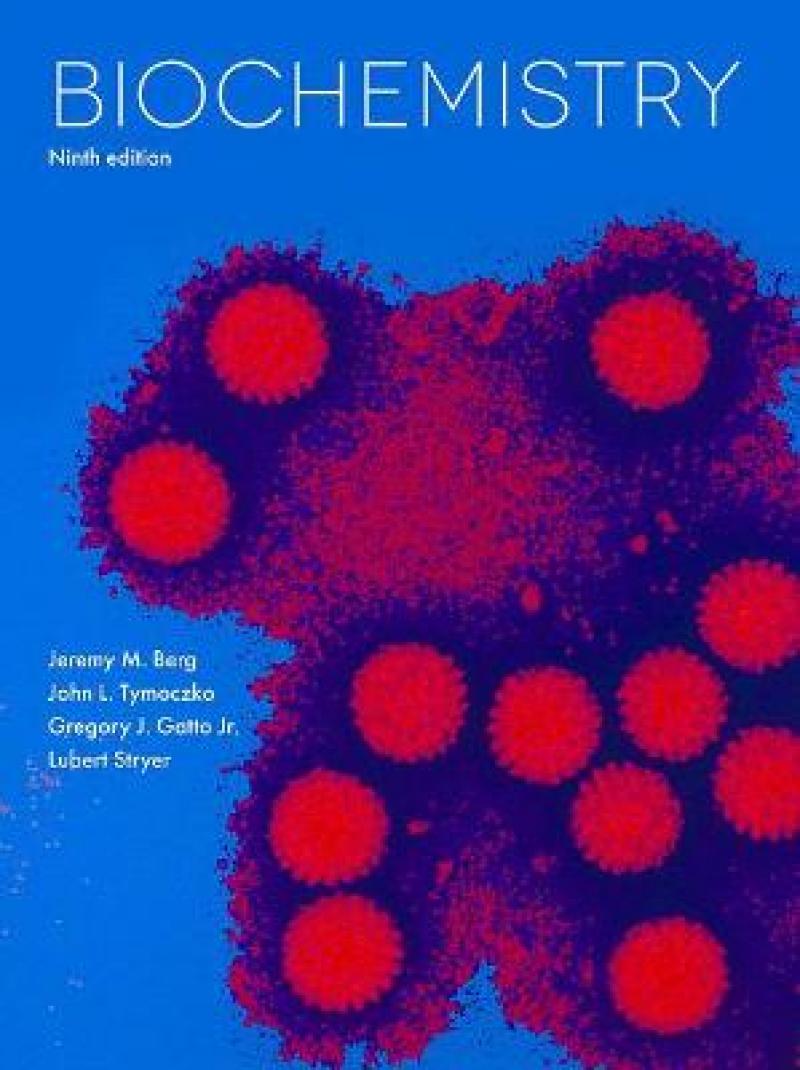Digital innovation and trusted authorship transform the way biochemistry students learn.
For four decades, this extraordinary textbook played a pivotal role in the way biochemistry is taught, offering exceptionally clear writing, innovative graphics, coverage of the latest research techniques and advances, and a signature emphasis on physiological and medical relevance. Those defining features are at the heart of this edition.
Biochemistry is now supported in Achieve, Macmillan’s new online learning platform, Achieve is the culmination of years of development work put toward creating the most powerful online learning tool for chemistry students. Achieve includes an interactive e-Book as well as our renowned assessments and a variety of multimedia assets. Instructors can assign or download instructor resources and take advantage of powerful analytics and quick insights to inform teaching.Les mer
Part I THE MOLECULAR DESIGN OF LIFE.- 1. Biochemistry: An Evolving Science.- 2. Protein Composition and Structure.- 3. Exploring Proteins and Proteomes.- 4. DNA, RNA, and the Flow of Genetic Information.- 5. Exploring Genes and Genomes.- 6. Exploring Evolution and Bioinformatics.- 7. Hemoglobin: Portrait of a Protein in Action.- 8. Enzymes: Basic Concepts and Kinetics.- 9. Catalytic Strategies.- 10. Regulatory Strategies.- 11. Carbohydrates.- 12. Lipids and Cell Membranes.- 13. Membrane Channels and Pumps.- 14. Signal-Transduction Pathways.- Part II TRANSDUCING AND STORING ENERGY.-. 15. Metabolism: Basic Concepts and Design.- 16. Glycolysis and Gluconeogenesis.- 17. The Citric Acid Cycle.- 18. Oxidative Phosphorylation.- 19. The Light Reactions of Photosynthesis.- 20. The Calvin Cycle and the Pentose Phosphate Pathway.- 21. Glycogen Metabolism.- 22. Fatty Acid Metabolism.- 23. Protein Turnover and Amino Acid Catabolism.- Part III SYNTHESIZING THE MOLECULES OF LIFE.- 24. The Biosynthesis of Amino Acids.- 25. Nucleotide Biosynthesis.- 26. The Biosynthesis of Membrane Lipids and Steroids.- 27. The Integration of Metabolism.- 28. Drug Development.- 29. DNA Replication, Repair, and Recombination.- 30. RNA Synthesis and Processing.- 31. Protein Synthesis.- 32. The Control of Gene Expression in Prokaryotes.- 33. The Control of Gene Expression in Eukaryotes.- Part IV RESPONDING TO ENVIRONMENTAL CHANGES.- 34. Sensory Systems.- 35. The Immune System.- 36. Molecular Motors
Les mer
Practice problems with signature hints, targeted feedback, and detailed solutions.
Case studies encourage students to investigate biochemical mysteries.
Think/Pair/Share Questions designed to facilitate group thinking.
Les mer
Produktdetaljer
ISBN
9781319114657
Publisert
2019-03-25
Utgave
9. utgave
Utgiver
Vendor
W.H.Freeman & Co Ltd
Høyde
235 mm
Bredde
155 mm
Aldersnivå
UU, 05
Språk
Product language
Engelsk
Format
Product format
Innbundet
Antall sider
1208
Biografisk notat
Precise, informative Illustrations - Each figure focuses on a single concept, clearly telling the story of a mechanism, pathway or process without the distraction of excess detailJeremy M. Berg received his B.S. and M.S. degrees in Chemistry from Stanford (where he did research with Keith Hodgson and Lubert Stryer) and his Ph.D. in Chemistry from Harvard with Richard Holm. He then completed a postdoctoral fellowship with Carl Pabo in Biophysics at Johns Hopkins University School of Medicine.
John L. Tymoczko is Towsley Professor of Biology at Carleton College, where he has taught since 1976. He currently teaches Biochemistry, the Metabolic Basis of Human Disease, Oncogenes and the Molecular Biology of Cancer, and Exercise Biochemistry and co-teaches an introductory course, Energy Flow in Biological Systems.
Gregory J. Gatto, Jr., received his A.B. degree in chemistry from Princeton University, where he worked with Martin F. Semmelhack and was awarded the Everett S. Wallis Prize in Organic Chemistry.
Lubert Stryer is Winzer Professor of Cell Biology, Emeritus, in the School of Medicine and Professor of Neurobiology, Emeritus, at Stanford University, where he has been on the faculty since 1976. He received his M.D. from Harvard Medical School.
